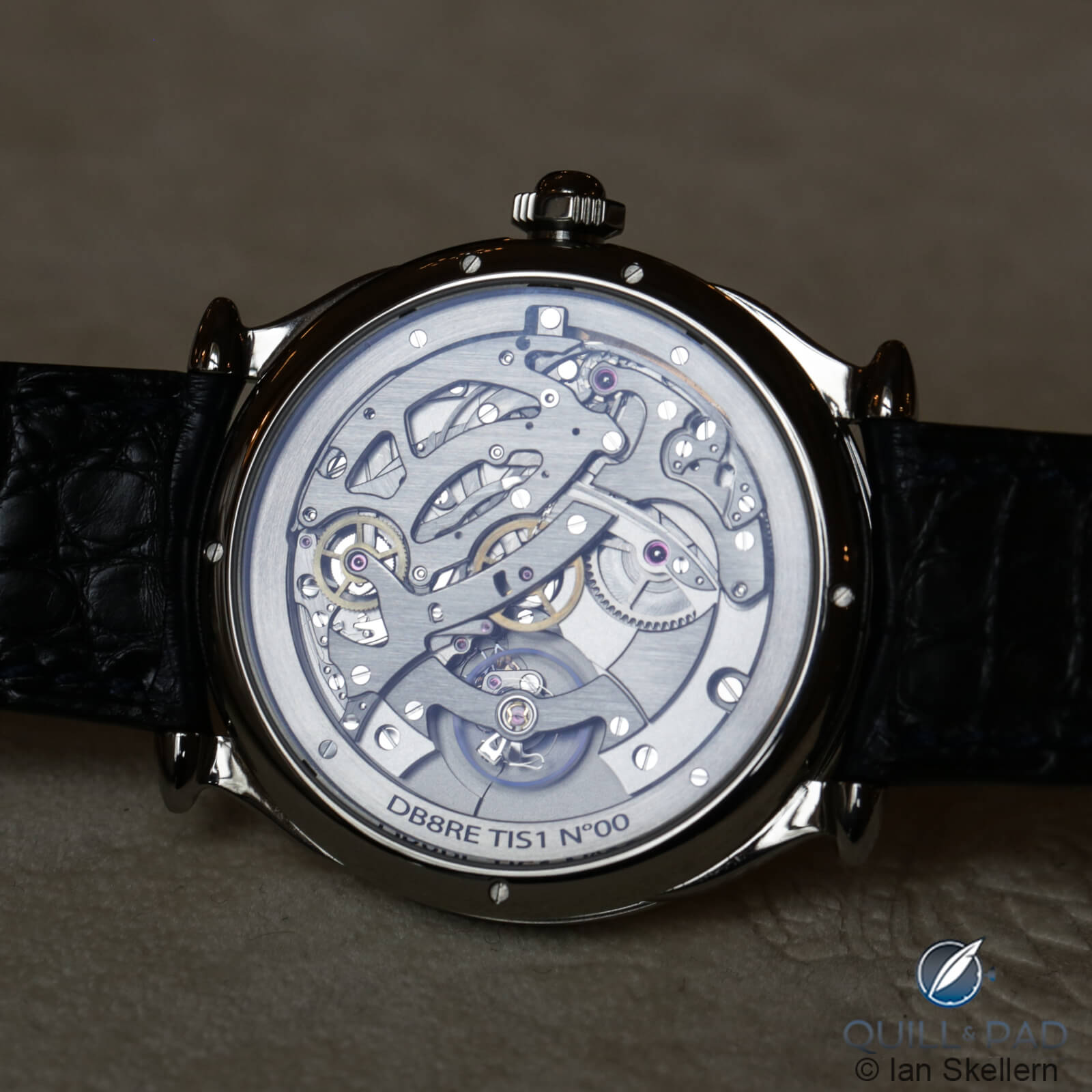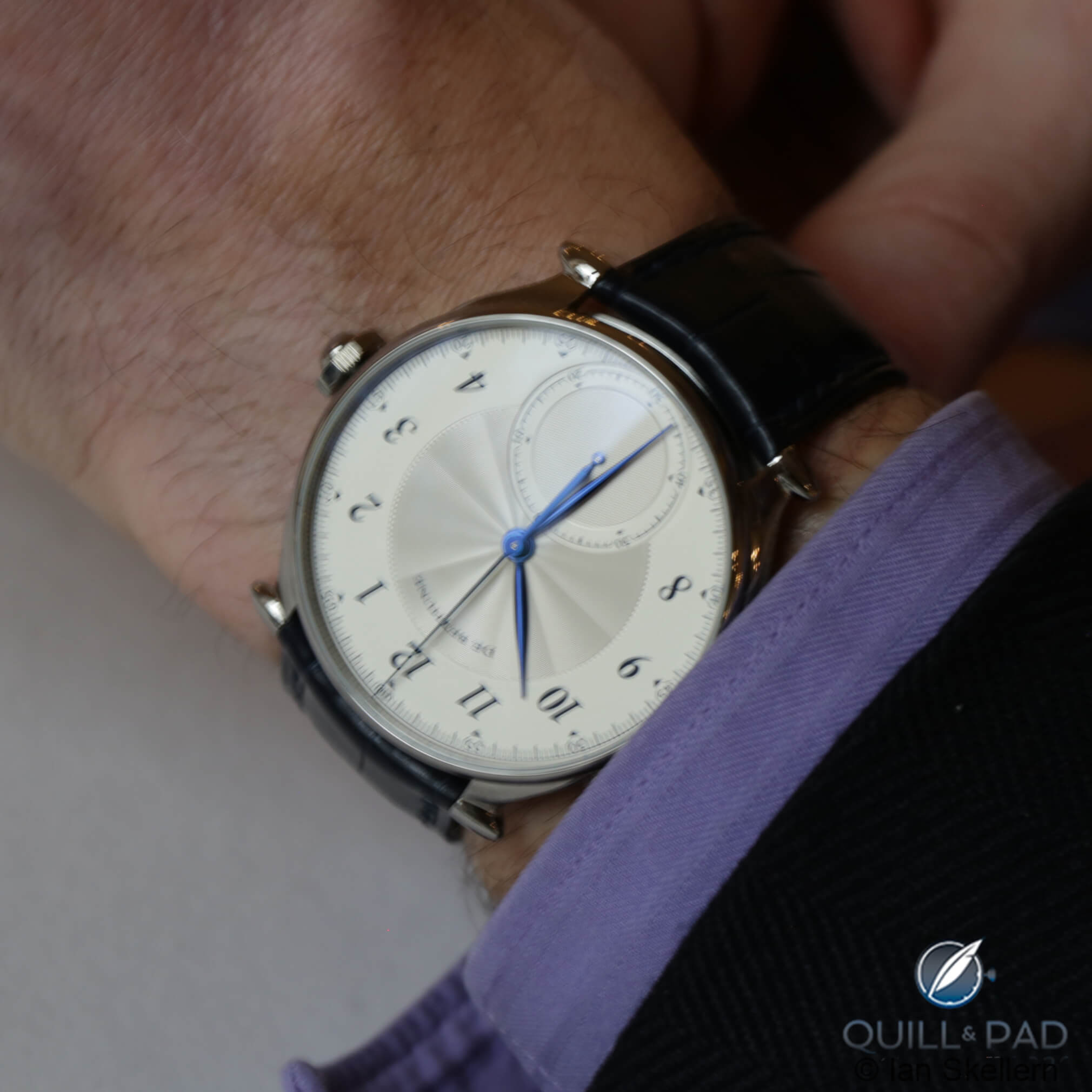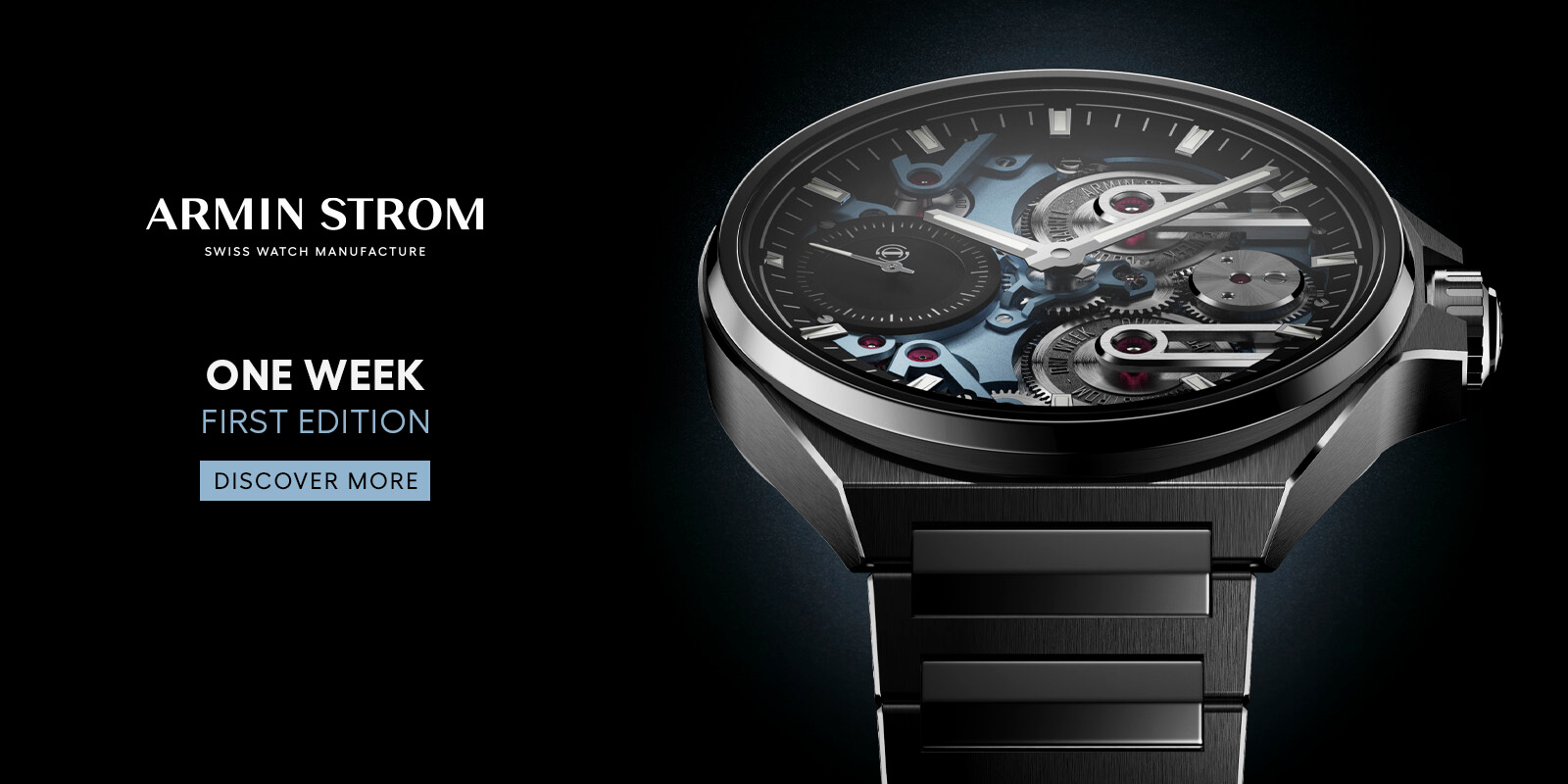De Bethune DB Eight: The Ultimate in Chronograph Refinement!
Hiding in plain sight is one of the most successful methods to avoid detection due to a phenomenon called selective attention, an automatic feature of the human brain and quite possibly one of its most important functions.
At any given moment, the human brain, and by extension the central nervous system, receives input from billions of nerves (literally) and other types of sensory cells across the entire body and our more than a dozen senses.
As a result, the brain is effectively sent up to 1.5 megabytes of information every second, approximately 11 million bits, and almost all of it gets filtered out. Human consciousness can only hold around 50 to 100 bits of information a second before we start to become overloaded, so 99.9999% of everything we experience is just tossed away as irrelevant data. This is the automatic process of selective attention.
To be fair, a portion is retained that we don’t consciously perceive, and it can affect our reflexes or other autonomous systems in the body; however pretty much everything we experience is still ignored and lost.
For that reason alone, human perception is not based on picking out a needle in a haystack, it much more closely resembles noticing a smudge on a perfectly clean wall. We filter information by looking for differences, things out of order, or something unexpected among the expected.
When looking for Waldo among a sea of similarly dressed people, we become accustomed to the noise of the crowd so that it blends together and we can spot the small signal that is Waldo’s distinctive look.
So, if one wanted to hide something well and use our own brain against us, the best method truly is hiding in plain sight. This is why losing your keys in the exact place they always are is so common: our brain becomes accustomed to the appearance of a set of keys on that table by the door that it filters them out when we look for them.
The same effect is what causes people to “lose” the sunglasses that they are wearing because they can’t feel them, The brain becomes acclimatized to the sensation of wearing the glasses so tunes out those signals because they aren’t changing.
Given this truth, what would happen when a watch brand makes a chronograph that looks almost exactly like a simple, time only watch? You end up with the most low-key, under-the-radar, stealth chronograph on the market: the De Bethune DB Eight!

De Bethune DB Eight monopusher chronograph
————————————————————————————————————–
—————————————————————————————————–
De Bethune DB Eight
Twenty years after the original DB8 launched, a very classic monopusher chronograph that fit right in with the earliest iterations of De Bethune, the brand has decided to reimagine the model, updating it to fit a bit better with their modern design language.
It is not dramatically different on its face, but the updated details make the DB Eight in a league above the originals, in addition to the new caliber and its buttery smooth performance.

De Bethune DB Eight monopusher chronograph
From the start, the DB Eight is similar to the original, with a dial designed around displaying the hours and minutes clearly, with a chronograph seconds track around the edge of the dial, plus a chronograph minutes counter at six o’clock. And while the hour numerals are the exact same font as the original and the center is the same guilloche pattern, the rest of the dial uses line weight and negative space to significantly shift the aesthetic.
First, the chronograph seconds track has moved to the outer edge of the dial, opening up the hour numerals and letting them float around the dial, making the dial feel much larger.

De Bethune DB Eight on the wrist
The minutes and chronograph seconds have now been incorporated into a single track with five minutes numerals nested within hooked hash marks. Thanks to an upgrade in frequency from the original DB8, the new DB Eight now beats at 4 Hz, or 8 beats per second.
That change led to the seconds hash marks being spaced at four per second, which is much less busy than the previous five marks (which didn’t correlate to the previous frequency) when combined with the larger diameter of the seconds track. The standard railroad track design was also ditched for a stepped set of hash marks that feel much more modern and in line with De Bethune design.

Running seconds subdial of the De Bethune DB Eight monopusher chronograph
Another change is the chronograph minutes which has also relocated and been expanded to reach the edge of the dial, making it a much more impactful design feature. The minutes also count to 60 instead of the original 45 (which some called the soccer counter) with a minutes track that matches the design seen at the edge of the dial for better cohesion.
The greater dial diameters also call for longer hands all around, something that seems minor but creates a massive difference in appearance between the original and the new model. Modern dimensions and proportions are on full display when comparing the two.
—————————————————————————————————–
—————————————————————————————————–
Mechanical details
Those modern dimensions still maintain one cleverly added detail of the original, the chronograph hands overlap. In case it wasn’t obvious, the chronograph seconds hand was intentionally designed with a fairly long tail which extends to exactly cover the chronograph minutes hand when it is reset to zero.
The original covered the entire hand all the way to the central pinion, whereas the new DB Eight is slightly shy but still extends to the exact point where the minute hand necks down towards its central axle.
A long vertical line of perfectly blued titanium then divides the dial into a perfectly balanced expanse of satin and guilloche silver. Even with the sub dial, at this point the watch feels like a simple three-handed watch, and with a monopusher there isn’t much to let on to outside observers that it is anything but. It is only when it is operating that you truly grasp what it is, otherwise, it lays low.

Movement of the De Bethune DB Eight
Flipping the watch over makes that immediately clear, but closer inspection uncovers details that you won’t find in the typical chronograph. With De Bethune there are obvious features like the blued titanium balance wheel with white gold inertia blocks and the flat terminal curve hairspring, but these play less into how the mechanism feels to the user. That is controlled by the layout of the column wheel and corresponding levers that engage the coupling wheels and chronograph runner.

Movement of the De Bethune DB Eight monopusher chronograph (column wheen at 9 o’clock)
In the orientation employed by the DB3000 movement, the column wheel is placed right next to the crown and monopusher, just off to the side and nearly tangent with the line of motion. As a result, the translation of the linear motion of the pusher into rotational motion of the column wheel was dramatically reduced, it is now almost a straight shot instead of the more common long, curving lever that needs to wrap around the movement.
Therefore, the clutch and the start/stop lever are designed to require very little movement and much less rotation, reducing the amount of torque necessary to activate the mechanism.
—————————————————————————————————–
—————————————————————————————————–
User experience
The combination of these factors makes for a very easy to press monopusher that doesn’t require a hard click to start the chronograph. Anyone that has used a variety of chronographs will understand that varying pressure requirements for different movements significantly affects the experience of using the chronograph.
Creating a movement with a pusher that is smooth to push and requires very little force to overcome the internal friction and spring force makes it extremely pleasurable to activate the chronograph.

De Bethune DB Eight monopusher chronograph
I have not used the original DB8, so the DB3000 movement in the new DB Eight may not be dramatically different to use, but it is clear that all the updates to the mechanism have created the smoothest chronograph I have ever used. In fact, I was surprised and a bit confused by just how light of a touch was required to start the seconds hand counting, and this was echoed by everyone that handled it around me.
Chronographs are often designed as rugged tools or ultra-high-end complications, but the DB Eight was intended to be a luxury experience of tactility. The original case design was always meant for exploring with your fingertips, and the pusher being a rounded button instead of a slightly smoothed square edge adds an intentional lack of sharpness. In fact, the only sharp edges are the small ridges on half of the surfaces of the octagonal crown, keeping you from ever feeling anything but smoothness.
As I mentioned, it really is buttery smooth, both in operation and in case construction. It’s a great example of what De Bethune is so good at, and what it has been quietly doing over the past couple years. With the release of the DB25s QP and this DB Eight, De Bethune is taking some of its best pieces and improving on them to allow a new generation of collectors a chance to own some fantastic horology.
De Bethune isn’t abandoning new concepts or innovation, but it is the sign of an artist maturing and wanting to return to projects that they know can be improved from the first go around. I wish I had the time and resources to revisit some early projects, even the first watch I made and have another try at making it again with all my new skills and perspective.

De Bethune DB Eight monopusher chronograph
The DB Eight is on my shortlist for this year’s GPHG chronograph category and helps De Bethune stay as one of my all-time favorite brands. I eagerly await the next time I might get a chance to get my hands on what could be the stealthiest chronograph on the market right now.
It isn’t the typical fare for what has made De Bethune so popular in the last decade, but it could be key to what could keep them popular for the decade to come.
While it’s so hard to hold because it is so smooth, let’s try to break this down!
- Wowza Factor *9.94 The amount of wow for this watch isn’t even due to the awesome looks, it’s all about how it feels, because it feels oh so good!
- Late Night Lust Appeal * 99.4 » 974.781m/s2 For how little force it takes to start this chronograph it sure has enough lust appeal to keep you glue to your seat!
- M.G.R. * 70.3 Just like I’ve said, the DB Eight flies under the radar but the movement sure is a rather geeky creation. It’s hard to argue that it doesn’t deserve heaps of praise for its amazing functionality!
- Added-Functionitis * Mild A chronograph is a rather useful added function, one that many people will claim is the most useful complication aside from a date. Still, I only count it as one (albeit incredible) added function so you can plan to take some children’s strength the Gotta-HAVE-That cream since even a baby could start and stop this chronograph!
- Ouch Outline * 12.1 A twisted knee! When sprinting across an uneven field covered in tall grass, you have no idea if you are about to step in a hole or hit a bump, so it is actually unsurprising when you accidentally twist your knee due to losing your footing at full speed. Even if you don’t go down, twisting your knee is a great way to walk with a limp for a week or two. Still, I’d sprint across a sketchy field every day if I was running closer to the DB Eight!
- Mermaid Moment * Can you feel that action! If you weren’t sold by the looks of the piece, its understated elegance, then once you press that monopusher it will all fall into place and you’ll be asking Jeremy to be your best man at the ceremony!
- Awesome Total * 881 First, begin with the caliber number (3000) and divide by the grade of the titanium used in the case (5), then add the number of components in the movement (281) to land on an exceedingly smooth awesome total!
For more information, please visit www.debethune.ch/en/collections/db-kind-two-2-2/dbd-season-2.
Quick Facts De Bethune DB Eight
Case: 42.4 x 9.2 mm, titanium
Movement: manually wound DB3000 caliber, 60-hour power reserve, 28,800 vph/4Hz
Functions: Hours, minutes, monopusher chronograph seconds and instantaneous 60-minute counter
Price: 85,000 CHF
* This article was first published 03 May 2023 at De Bethune DB Eight: The Ultimate in Chronograph Refinement!
You might also enjoy:
De Bethune DB25s QP: Near Perfect Is Now Perfect!
Reflecting On Ten Years Of The Sensational De Bethune DB28
The Nine Muses And The De Bethune DB28 Digitale
De Bethune DB28XS Starry Seas Reviewed by Tim Mosso
De Bethune Kind Of Two Tourbillon: Double-Faced Split Personality With Floating Lugs (Video)
De Bethune DB28 Tourbillon Deadbeat Seconds reviewed by Tim Mosso






Leave a Reply
Want to join the discussion?Feel free to contribute!